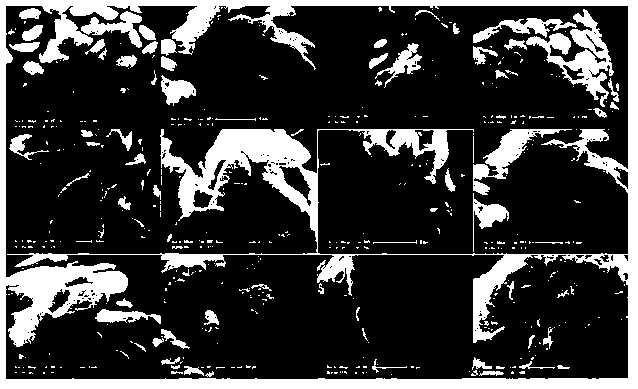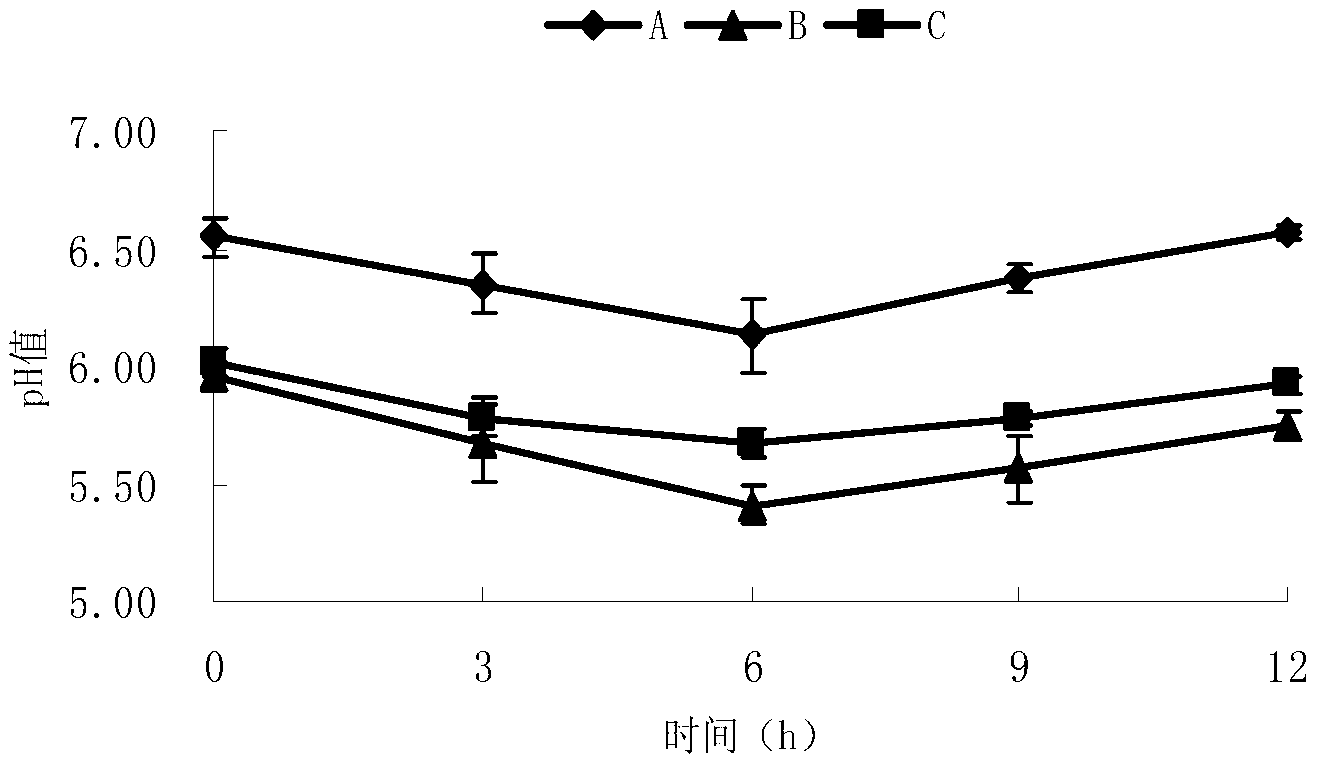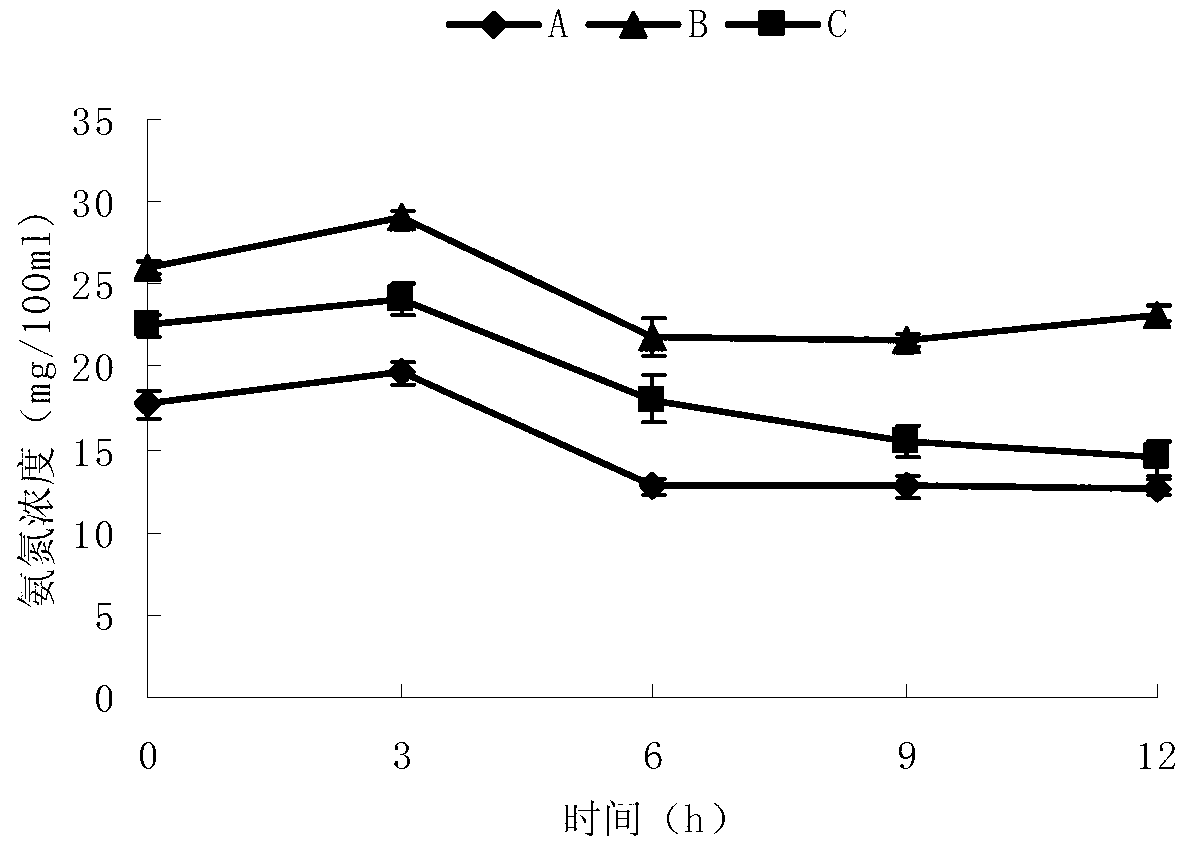Thiamine preparation for preventing and treating rumen acid chronic acidosis
A technology of thiamine and acidosis, applied in applications, animal feed, animal feed, etc., can solve problems such as rumen acidosis, volatile fatty acid ratio imbalance, lactic acid accumulation, etc., to prevent chronic acidosis, reduce accumulation, improve The effect of fermentation
- Summary
- Abstract
- Description
- Claims
- Application Information
AI Technical Summary
Problems solved by technology
Method used
Image
Examples
Embodiment 1
[0020] Embodiment 1: The influence of thiamine hydrochloride compound preparation on rumen fermentation of dairy cows
[0021] In this study, an in vivo test method was used. Three 4-year-old Holstein cows with a body weight of (650±20) kg, an average milk yield of (16.5±0.5) kg, and a ruminal cannula were selected and fed with conventional diets (the ratio of fine to coarse: 40:60 , control group), the diet of the high-concentrate group (concentrate-to-coarse ratio was 70:30), and the diet of the high-concentrate group was supplemented with thiamine compound preparation (concentrate-to-coarse ratio was 70:30, and the amount of thiamine added was 180 mg / kg·DM), a 3×3 Latin square experiment was carried out for each period of 30 days, and the dairy cows fed the high-concentrate diet group all reached SARA in each period. Book
[0022] The effect of thiamine on rumen microbial fermentation of Holstein dairy cows under the condition of high-concentrate diet showed that adding ...
Embodiment 2
[0046] Example 2: Effects of thiamine hydrochloride on growth performance of Holstein cattle
[0047] From July 22, 2012 to September 6, 2012, 60 healthy, 11±1-month-old, and similarly weighted black-and-white cattle in the growing period were selected at Su Niu Farm in Xuzhou City, Jiangsu Province, and divided into 3 groups (Table 6 ), 20 cows in each group, and the test cows were reared in a single pen. The normal diet (concentrate-to-grain ratio was 40:60, control group), the high-concentrate group diet (concentrate-to-coarse ratio was 70:30) and the high-concentrate group diet supplemented with thiamine (concentrate-to-coarse ratio was 70:30, the dosage of thiamine was 180mg / kg·DM), the pre-feeding period of the test was 14 days, and the main test period was 31 days.
[0048] The results of the growth test are shown in Table 2. The growth performance of the high-concentrate and high-concentrate-added thiamine groups was better than that of the conventional diet group, a...
Embodiment 3
[0053] Embodiment 3: the influence of thiamine hydrochloride on the development of dairy cow rumen tissue
[0054] In this experiment, nine 3-month-old calves with a body weight of about 95 kg and similar size were selected and randomly divided into 3 groups, one group was fed a 40:60 conventional diet, and the other group was gradually fed a high-concentrate diet. The other group added 120 mg / kg thiamine hydrochloride during the feeding process of SARA induction until SARA occurred, and the test period was 45 days. After the end of the experimental period, the animals were slaughtered, and the rumen epithelial tissue was collected immediately for electron microscope analysis.
[0055] See the test results Figure 5 . Depend on Figure 5 It can be seen that the ruminal epithelial teats of calves in the conventional diet group and SARA added thiamine group were well developed, showing characteristics such as softness and tongue shape (Fig. 1, 2). Soft (Fig8, Fig9); while th...
PUM
 Login to View More
Login to View More Abstract
Description
Claims
Application Information
 Login to View More
Login to View More - R&D
- Intellectual Property
- Life Sciences
- Materials
- Tech Scout
- Unparalleled Data Quality
- Higher Quality Content
- 60% Fewer Hallucinations
Browse by: Latest US Patents, China's latest patents, Technical Efficacy Thesaurus, Application Domain, Technology Topic, Popular Technical Reports.
© 2025 PatSnap. All rights reserved.Legal|Privacy policy|Modern Slavery Act Transparency Statement|Sitemap|About US| Contact US: help@patsnap.com



